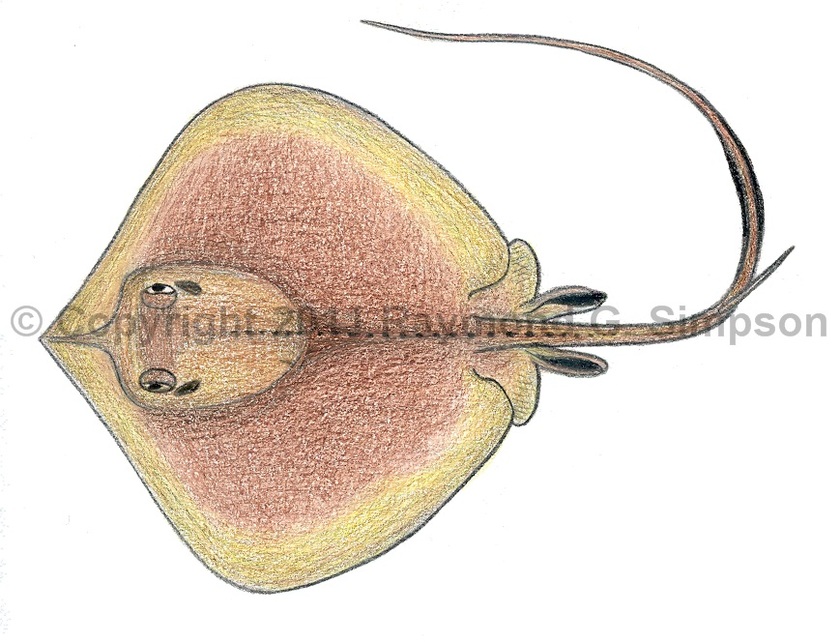
Common Name
Atlantic Stingray
Year Described
Lesueur, 1824
Identification
A small, long-snouted species of Hypanus with a broad rounded disk. Eyes and spiracle relatively large. Tips of pectoral fins distinctly rounded. Pre-orbital length much longer than distance between the spiracles, with concave margins of snout. The dorsal surface has a line of medial denticles. Additional denticles on the interorbital space are often present. Ventral finflap much larger than vestigial dorsal one. Tail long and whip-like with spine close to tail base. Pelvic fins protrude beyond pectorals.
Color
Dorsum medium to yellowish brown, becoming paler toward the disk margins. Often with pink tinges on the fin margins of freshly caught specimens. Underside white.
Size
Maximum size to 60cm DW.
Habitat
Inhabits shallow coastal waters (<20m) over mud or sandy bottoms. Commonly enters brackish and freshwater and is the only western Atlantic stingray to enter pure freshwater.
Range
Continental waters from Virginia to the Gulf Mexico.
References
Last, P. R., Naylor, G. J. P., & Manjaji-Matsumoto, B. M. 2016. A revised classification of the family Dasyatidae (Chondrichthyes: Myliobatiformes) based on new morphological and molecular insights. Zootaxa, 4139 (3): 345-368.
Santos, H.R.S. and M.R. de Carvalho. 2004. Description of a new species of whiptailed stingray from the southwestern Atlantic Ocean (Chondrichthyes, Myliobatiformes, Dasyatidae). Boletim do Museu Nacional do Rio de Janeiro, Nova Série. Zoologia No. 516: 1-24.
Other Notes
Moved from Dasyatis to Hypanus based on morpological and molecular data (Last et al., 2016).